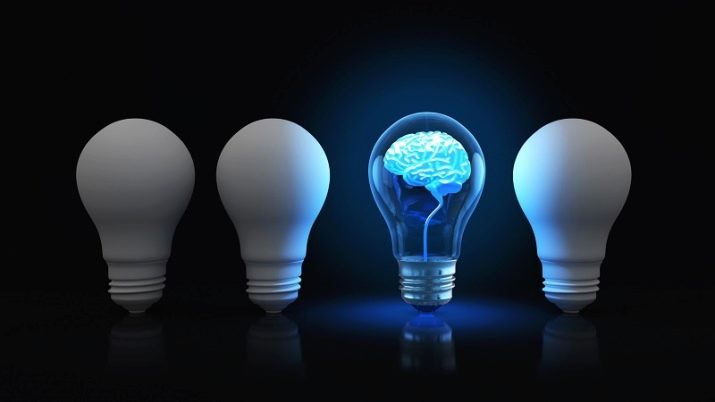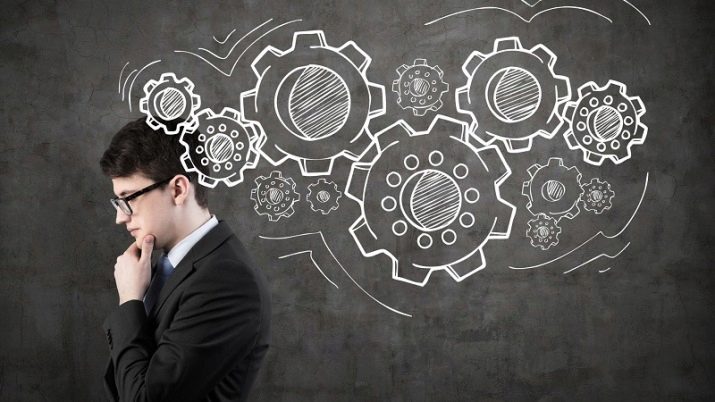Attention: what is it, what types and properties are there?

Without attention, living beings cannot receive information about the world around them. Thanks to him, we are informed and prepared for different scenarios of the development of events. The correct attitude to attention, its timely correction and development improve the quality of our life in all its spheres.

What it is?
Psychology textbooks interpret attention as a selective focus of perception on certain objects. The goal is to obtain as much operational information as possible about an object or phenomenon. In cognitive psychology, the definition is more extended. Experts are sure that our goals and needs, the nature of the personality and the situation in which we find ourselves are behind the selectivity of our attention. As a higher mental process, attention makes us viable. Just imagine what would happen to the view if the creatures in it were completely deprived of attention! Extinction would be rapid, traumatic, and inevitable.
By focusing on something, we receive information on the basis of which our consciousness makes decisions whether it is dangerous, what to do. Stimuli have different strength of influence, on which further psychophysiology depends. Attention should be considered as the most important cognitive process, without which it is impossible to teach skills, gain knowledge. While our attention is focused on something, we do not perceive other objects clearly. But the focus of attention can change quickly. Close attention means a long delay in focus on a particular subject. This almost always causes changes in physiology - stress hormones are produced.
Experts do not consider attention to be a separate independent psychoprocess, because it accompanies various other states all the time. But attention is a concept that clearly reflects the property of other processes. A person can listen absent-mindedly or attentively, look casually or peer and note the smallest details, devote more or less attention and time to his work.
We pay attention only to what is important to us in a given situation or under specific circumstances. The time of focusing on an object is called concentration.

Signs
The criteria for talking about signs of attention are multifaceted. Experts identify several main ones:
- the manifestation of attention is always accompanied by the predominance of a certain type of activity over others;
- at the moment of attention, the individual's mental abilities increase, and sensory and tactile perceptions also become more acute.
The most important sign of attention is the mobilization of mental activity. If a person does something carefully, productivity, efficiency and speed of his actions increase. Attention is always selective. The more important an object is to us, the longer periods of concentration can be. Attention cannot simultaneously receive different sources of information; it switches smoothly or in jumps between objects, each time choosing the one that has priority.
As long as a person keeps his attention on something, the work of his brain is regulated by this fact. Until the task is completed, it is attention that helps to maintain and control thought processes.

Basic properties
The properties of attention are:
- clear defined focus - it is always focused on one thing;
- volume and distribution - characteristics that speak of sufficiency, redundancy or deficiency;
- concentration - the period of keeping the internal focus on the object, its strength;
- steady state and the ability to switch provides mobility.
Let's take a look at the general mechanisms to understand how attention works. At the start, all objects have the same value. Attention is widely distributed among them, not being selective. We see something, but we may not even be aware of it, because attention is unstable. As soon as one appears among equal objects that is meaningful to us in connection with needs, tasks or situation, attention tenaciously snatches it out and begins to supply streams of information to the brain. Physiological foundations largely depend on individual characteristics. Someone manages to process auditory information faster, someone prefers visual images, tactile sensations. All processes are activated.
- Concentration keeps attention on the object we need.
- The amount of attention determines how many objects a person can grasp with his attention simultaneously. Adults usually manage to keep in focus up to six objects, school children - from 2 to 5. Individuals can exceed these normative values. Show the person several pictures at the same time for a split second. How much he remembers, that will be his personal volume.
- Resilience means the time during which a person is able to be extremely attentive. Weak stability is called lability.
- Further, our attention switches. This happens deliberately. If the focus shifts unintentionally, they are not talking about switching, but about distraction.
The more often attention switches from the object and back, the higher the likelihood that a person will make many mistakes. Intense switching is called absent-mindedness.


Functions
We usually don't think about attention until there are real problems with it, until it successfully copes with its functions. These include:
- quick detection of the objects we need, sources of danger, important information;
- maintaining our vigilance and helping the instinct of self-preservation;
- the ability to conduct an operational search;
- assistance in analyzing, identifying, comparing data, replacing existing information with new.
Violation of just one function leads to attention disorders as such. Only under the conditions of the work of all components as a general whole organism can we talk about the full value of attention and the quality of life and human activity.

Species overview
The classification has long ceased to cause controversy in scientific circles. The main types of attention are highlighted, each of them is described in detail.
Involuntary
This type is often called passive. With it, a person does not make any conscious efforts to select an object, to regulate other mechanisms. Attention independently sets some "goals", maintains contact with them and moves on to new ones. It is believed that it happens on the basis of the deep attitudes of the personality, which the person himself, in fact, is not even aware of. Such attention may not be long, it usually quickly turns into an arbitrary form. An involuntary reaction depends on the characteristics of the object and stimulus, personal previously experienced experience, and even on the state and mood of a person. For example, he can record birds singing on the street if he woke up in a good mood, or not notice him if he had a whirlpool of problems and worries in the morning.
Involuntary focus cannot be underestimated. It is useful in our daily life, because it gives a chance to find strange or dangerous irritants in time and take measures to prevent negative consequences. It also has its downsides - it underlies unpleasant and ineffective distraction, in which our productivity decreases. Involuntary attention is "turned on" when a stimulus is not expected, is strong, or is new and unusual for the person. It often reacts to moving objects, contrasting or suddenly coinciding with the internal state of the individual.

Arbitrary
Its physiological foundations are associated with the excitation of a certain focus in the cerebral cortex, into which signals are received. Researchers believe that it was formed at the dawn of human civilization, and its development is associated with work. Without a conscious direction of inner focusing, a person would not be able to sharpen a stone and make the first tools, would not be able to hunt and survive.
To one degree or another, the direction of voluntary attention to an object is always associated with certain efforts on the part of a person. If the matter requires prolonged concentration and concentration, a person experiences fatigue, fatigue and even stress, which are no less than during physical actions, and sometimes even exceed their effect several times. In order not to overwork our selective attention and not disturb our perception and general well-being, experts recommend alternating activities that require high tension with activities that do not require laborious selective concentration.
Post-voluntary
Having established a connection with the object with a conscious effort, a person more easily perceives the rest of the flow of information. Thus voluntary attention goes into the so-called secondary involuntary or post-voluntary. The clearer it is, the easier it will be for a person to do the job, to study something. The main feature of this species is the absence of tension.
Also, the classification often distinguishes separately abstract and indirect attention, tactile, motor or sensory, auditory, visual, etc.
Forms
The forms of attention depend on the direction. When a person studies an object of the environment, learns, learns the world, they say that his attention is external or sensory-perceptual. Switching the focus of attention inside yourself, on your sensations, emotions, thoughts or experiences - inner attention or intellectual. It is necessary for a person to know himself, to control his behavior, actions, decisions, goals.
A separate form is represented by motor attention. It is aimed at controlling the actions and movements that a person performs.

Theories
There are many theories about attention. It is believed that not all information flows that a person receives can be processed. And, in fact, a person himself determines what he needs and what does not. Motorists are a prime example of this. On the trip, they see and notice less than their passengers, as their attention is not focused on what is happening on the streets, but on traffic signs and traffic lights. At the same time, they may not notice something very interesting on the sidewalk. But the question arises when exactly a person makes a choice: before the appearance of the stimulus or after.
British experimental psychologist Donald Broadbent put forward the theory of early selection and filtering. He invited the participants to simultaneously listen to different information, one of which was of certain interest to them. As a result, it was the interesting experiment that the participants remembered better than the one that sounded in the background. This allowed the scientist to say that our brain has some "filters" through which information unimportant to a person simply cannot pass. In any case, until he deigns to consciously devote his attention to these objects. Then the brain blockage will be released.
But where does the unnecessary information go then? Broadbent suggested and substantiated that it is also stored in the brain, but in a certain "storage on demand." Until the data is needed, it is not processed. Hence the effect of sudden recognition - "somewhere I have already heard this, but where - I do not remember." The British psychologist created a rather coherent theory, but did not foresee and could not explain why the brain nevertheless independently switches its attention to semantically significant stimuli, for example, to the name of a person.
This question haunted the scientific community for a long time, and later Harvard graduates - students of Donald Gray and Wedderburn - repeated the experiments of the teacher, but gave meaningful and insignificant words to different ears of the subjects. All participants in the experiment confirmed that words, the meaning of which matters to them, were remembered better than numbers and meaningless words. Thus, the students surpassed the teacher and explained that the “filter” is not total; words still penetrate through it, the semantics of which is perceived by a person as meaningful.

British psychologist, specialist in the study of attention Ann Trisman formulated another theory, called the "attenuator model". She tried to explain where the unfiltered information goes, exactly how it is stored at a deep level. Ann also identified the concept of barrier importance, proving that a person necessarily reacts to semantically important concepts for him, even if they come from sources that are not declared in priority. Name, surname, a sharp shout, words such as "alarm", "flame", "war", "run" make a person instantly switch from the perception of important information to a new one, for which there are no filters or barriers.
Other specialists have also worked on the issues of attention. For example, an expert in the field of the influence of music on the psyche Diana Deutsch and her colleague Donald Norman proposed a theory according to which a person receives one hundred percent of the information, and only then it is analyzed and selected. Something is left as unnecessary, something goes to a deeper analysis. Israeli-American psychologist Daniel Kahneman said it was not a matter of choice at all.He called attention a resource that can be distributed among stimuli. The higher the irritation, the higher the productivity of a person's attention.
Other scientists, such as Charles Eriksen and Michael Posner, also proposed their models and theories. But it is not only theories that science is alive. Practical research was also carried out, which were aimed at identifying those parts of the brain that are also responsible for our attention - where information is received, how or by whom it is processed, where it is stored. In particular, Posner identified a certain activity in the frontal lobe of the brain when a person solves serious tasks that require high concentration. And activity in the thalamus and eye movement, when attention is not conscious or tense.
Experiments on the open brain showed activity in the corpus callosum and made it possible to clearly understand that selective attention is supported by the left hemisphere, and the level of vigilance and alertness in a person is supported by the right. While a person is focused on something, his hippocampus generates intense theta rhythms, and nerve cells produce a special neurotransmitter - acetylcholine. That is why many organic brain lesions, mental illnesses occur with significant impairment of attention.

Development methods and management
Attention can be developed at any age. But the methods will be different.
Children
To strengthen unsteady children's attention, teach the baby to focus internal focus on a larger number of objects, 1-2 lessons per week are enough. Brain functions are still being formed, any correction is easy and effortless.
- Present information in the form of a game - the child should be interested.
- Motivate your child to follow through with any business he starts.
- Explain the importance of each action, call for attention if the baby begins to be distracted.
- Practice retelling the fairy tales and stories you read or tell your child, the storylines of the cartoons you watched together.
- Use charts, exercises and assignments to increase attention, paying attention to age assignment. Each group of children has its own methods.
Train children's attention unobtrusively: play cities and "edible-inedible" while walking or shopping, list who will remember the animals you meet along the way.

Adults
For adults at any age, several different techniques and techniques are suitable.
- Pick any object and try to focus on it as much as possible. Increase the concentration time gradually. Later, do the same with two or three objects, consciously shifting your attention between them.
- On the way to work, during walks, in the process of communicating with someone, try to fix as many details as possible in your memory. Try to reproduce them all in the evening, including small and insignificant ones.
- For the development of auditory attention, it is useful to stay in noisy places, public transport. Focus on one voice in the general hum. Try to keep it in focus for at least 5-7 minutes. Note the speed, timbre, words, emotions of the speaker, the meaning of his speech, try to imagine this person if you do not see him.
- Use online trainers. These are programs for drawing up anagrams, Schulte table, learning speed reading, applications for finding differences in pictures at a time.
It is good for adults to play too. Suitable "Fifteen", chess, checkers, backgammon, poker.

Useful Tips
Train several types of attention at the same time. For example, visual concentration can be combined with auditory concentration, and when learning new material, peripheral vision can be effectively synchronously trained. Even if you are not complaining about attentiveness, experts consider constant training and exercise to be the key to high productivity in the future.It has been proven that people who consistently use concentration skills, whose work is closely related to concentration, are less likely to suffer from senile dementia, they are less likely to have Alzheimer's disease.
A healthy lifestyle will help keep you observant for years to come. Walk more often, do reasonable physical activity, get enough sleep and eat wisely. Minimize stress - stress hormones first sharpen attention, and then significantly dull it, and such frequent "swing" does not bring benefits for mental health.
In case of signs of weakening of attention, absent-mindedness, inability to concentrate, contact a specialist - do not self-medicate.










